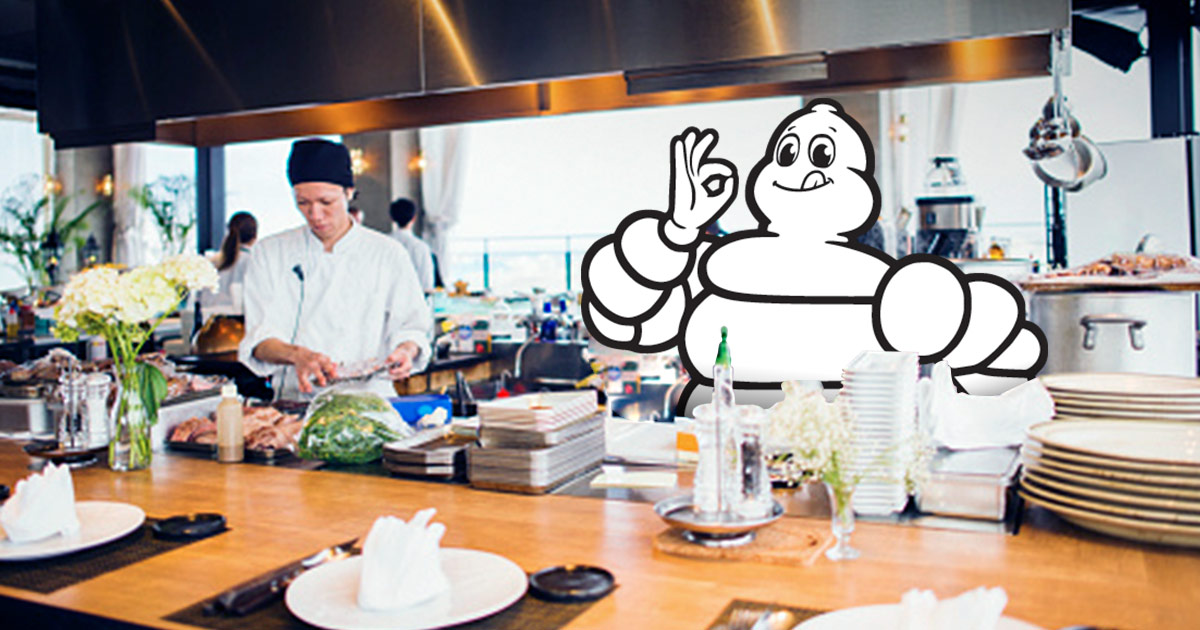23 October 2019
How Michelin wrote the book on fine dining

How Michelin wrote the book on fine dining
“Skillfully crafted dishes show good balance in their textures and flavours, and have a creative, original style,” says the Michelin Guide 2020 of Interlude, a UK restaurant owned by South African chef Jean Delport. Such praise from the publication is among the highest honour any chef can aspire to. But just how did the Michelin name come to define superior quality in two very different worlds – restaurants and tyres?
A taste for quality
Every year, anonymous Michelin inspectors visit the restaurants featured in the Guide for a revaluation to see if they’ve been able to maintain the exacting standards that earned them a prestigious Michelin star. While quality is paramount, so too is consistency.
The link between the world of fine dining and exacting food critics with that of tyres and motorsport is a bit baffling at first. Those familiar with Michelin’s products might see one clear link – consistent excellence. But once you know the full story of the Michelin Guide, it all makes sense.
A motorists’ guidebook
It all began in France in 1900 when the world was a very different place. Michelin was a young and innovative tyre company at a time when there were fewer than 3 000 cars in all of France. Road infrastructure was underdeveloped and gasoline was only available from select pharmacies.
Édouard and André Michelin, the company’s founding brothers, came up with the idea of creating a guide for motorists. It would include useful tips, maps and destinations worth visiting with the aim to encourage “horseless carriage” owners to take advantage of the unprecedented mobility now available to them, to explore their country and to broaden their horizons. The concept was a boon for restaurants which could now attract patrons from far and wide. Guides for numerous additional countries and regions in Europe were added in the years that followed.
In 1926, the Michelin Guide began to award stars to restaurants with especially high standards. In 1931 the hierarchy of zero, one, two, or three stars was introduced, making the restaurant listings highly competitive. Publication of the guide was suspended during the Second World War, except for a 1944 edition especially for allied military forces in Europe. The Michelin Guide was revived after 1945 when rubber, fuel and new cars were once again readily available. However, rankings were limited to two stars to cater for post-war shortages.
The three-star system returned in the early ’50s but with far more stringent requirements. Soon after, the guide was expanded to cover 24 countries across four continents and became internationally renowned for its exacting and mysterious “inspectors”.
A broader Michelin Guide
In 1955, a listing was added for restaurants that were exceptionally good but moderately priced. In recent years, street food has been included with listings for renowned vendors in Hong Kong and Singapore. Gastropubs have also been added to Ireland’s guide. In addition, the Michelin Green Guide now covers destinations other than restaurants, using the same three-star rating system.
The Guide has also become more in-depth in recent years, with the inclusion of a “fork and spoon” designation to score the overall comfort of a restaurant regardless of its star rating. There are also symbols to denote whether they offer an interesting wine, sake or cocktail selection, and even for an “interesting” or “magnificent” view.
The mark of excellence
Michelin’s dedication to excellence shines through in the Michelin Guide, adding value at every turn. Whether you’re enjoying a meal from a Michelin-starred chef or driving on a set of Michelin tyres, superior quality defines the experience every time.
And at the heart of everything we do, driving us ever forward is our boundless passion. See for yourself how that quality takes shape in our product range.